Cosmetic Dentistry for Crooked Teeth: An In-Depth Exploration
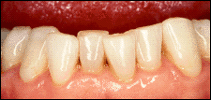
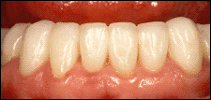
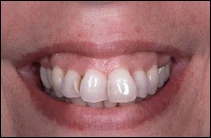
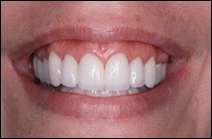
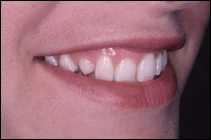
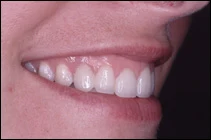
Crooked or misaligned teeth have long been a concern for individuals seeking both functional improvement and aesthetic enhancement. Traditionally, orthodontic treatments have been the standard approach to address this issue. Orthodontics typically involves the use of braces, which consist of brackets bonded to the tooth surfaces, connected by wires and rubber bands. These components work together to exert light, consistent forces that gradually move teeth into their desired positions. This process often spans two or more years, requiring significant time, commitment, and patience from the patient. Additionally, orthodontic appliances are often visible, which may deter some individuals due to aesthetic concerns. Even after the teeth have been aligned, patients are often required to wear a retainer for the rest of their lives to maintain the new position of their teeth.
While orthodontic treatment is highly effective, it may not always be the most suitable option for everyone. For those with minor misalignments, cosmetic dentistry offers a faster and less conspicuous alternative. Cosmetic dental procedures, such as the application of ceramic veneers or porcelain crowns, can correct slightly misaligned teeth in a fraction of the time required for traditional orthodontics, typically within two to three weeks. These procedures are especially beneficial for individuals who wish to avoid the extended duration and visibility associated with braces. Moreover, these treatments often eliminate the need for a retainer, offering a more convenient long-term solution.
One of the key advantages of cosmetic dentistry is its ability to address not only alignment issues but also other dental imperfections. Many individuals with misaligned teeth also have surface defects, such as chips, cracks, or discoloration, as well as worn incisal edges. Porcelain veneers and crowns can simultaneously correct these issues, restoring the teeth to their optimal appearance and function. The versatility of these treatments makes them an appealing option for those seeking comprehensive dental enhancement.
Porcelain veneers, in particular, are a popular choice for minor misalignments. These thin shells of porcelain are custom-designed to fit over the front surfaces of the teeth, masking imperfections and creating the illusion of perfectly aligned teeth. By varying the thickness of the veneers, an expert cosmetic dentist can effectively compensate for slight misalignments, eliminating the need for traditional orthodontic treatment. Furthermore, the durability and natural appearance of porcelain veneers make them an excellent long-term solution for enhancing both the function and aesthetics of the teeth.
It is important to note, however, that cosmetic dentistry is not a one-size-fits-all solution. Each patient’s dental condition is unique, and a thorough analysis of the existing teeth, their functional relationships, and the overall health of the oral cavity is essential. This includes assessing the condition of the mandibular joints, which play a crucial role in maintaining proper alignment and function. Any issues with the temporomandibular joints (TMJs) can affect the success and longevity of the treatment.
To ensure the best possible outcomes, cosmetic dentists often utilize advanced diagnostic tools and techniques. These may include properly mounted dental models, which provide a detailed representation of the patient’s teeth and bite, as well as trial treatments, such as dental diagnostic wax-ups. A wax-up involves creating a mock-up of the proposed treatment using wax to simulate the final result. This allows both the dentist and the patient to visualize the potential outcome and make any necessary adjustments before proceeding with the actual treatment. Such meticulous planning helps minimize invasiveness and ensures that the chosen procedure aligns with the patient’s aesthetic goals and functional needs.
While cosmetic dentistry offers numerous benefits, it is essential to weigh these against the potential risks and limitations. Porcelain veneers and crowns require the removal of a small amount of enamel from the natural teeth to accommodate the restorations. This irreversible process underscores the importance of careful consideration and consultation with a qualified professional. Additionally, while porcelain restorations are highly durable, they are not immune to wear and damage over time. Proper care, including regular dental check-ups and good oral hygiene practices, is necessary to maintain their appearance and functionality.
Despite these considerations, cosmetic dentistry remains an excellent option for addressing slightly misaligned teeth, particularly when combined with other restorative procedures. For example, individuals with aged or damaged teeth can benefit from a comprehensive approach that includes veneers or crowns to correct alignment, enhance aesthetics, and restore function. This holistic treatment strategy not only improves the appearance of the smile but also contributes to overall oral health and well-being.
It is worth emphasizing that conservative treatments should always be the first line of action when addressing dental concerns. Orthodontics, bleaching, direct bonding, and enamel reshaping are less invasive options that may be sufficient for achieving the desired results in many cases. However, for patients with more complex needs or specific aesthetic goals, porcelain veneers and crowns can provide a highly effective solution.
The decision to pursue cosmetic dentistry should be made in collaboration with a qualified dentist who can provide personalized recommendations based on a comprehensive evaluation of the patient’s dental condition. Factors such as the severity of misalignment, the presence of surface defects, and the patient’s lifestyle and preferences should all be taken into account. By considering these factors, the dentist can develop a customized treatment plan that addresses both functional and aesthetic concerns while minimizing invasiveness.
In conclusion, cosmetic dentistry offers a valuable alternative to traditional orthodontics for individuals with slightly misaligned teeth. Procedures such as porcelain veneers and crowns provide a faster, more discreet solution that can also address other dental imperfections. With careful planning and a thorough evaluation of the patient’s dental condition, cosmetic dentistry can deliver outstanding results that enhance both the appearance and functionality of the teeth. However, it is essential to approach these treatments with a clear understanding of their benefits and limitations, as well as a commitment to maintaining oral health through proper care and regular dental visits. By doing so, patients can achieve a beautiful, healthy smile that lasts for years to come.
References:
Tipton PA1. Aesthetic tooth alignment using etched porcelain restorations. Pract Proced Aesthetic Dentistry 2001 Sep; 13(7): 551-5.
Lowe RA1et al. Indirect laminate veneers: an excellent option to correct elective aesthetic problems.. Dentistry Today 2000 Aug; 19(8): 84-8.
Radz GM. Minimum thickness anterior porcelain restorations. Dental Clinic North Am 2011 Apr; 55(2): 353-70.
Peumans M et al. J Dent. Porcelain veneers: a review of the literature. 2000 Mar; 28(3): 163-77.



